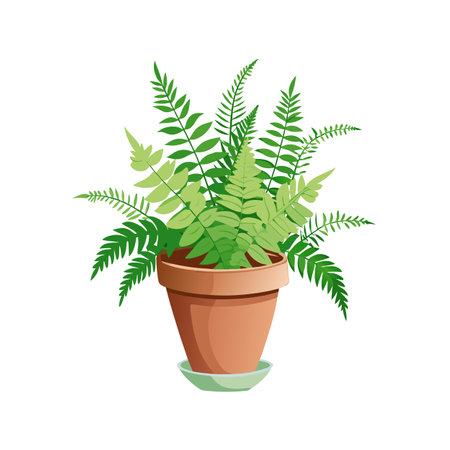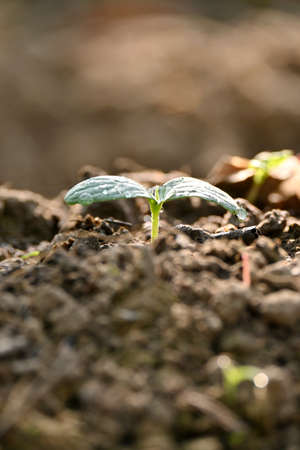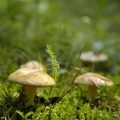Introduction to Vine Weevils in the UK
If you’ve ever wandered through your garden with a little one by your side, delighting in the tender leaves and vivid blooms, you’ll know how precious each plant is—much like nurturing a young sapling or watching a child grow. But just as children sometimes face hidden challenges, our beloved plants can encounter secret threats lurking beneath the surface. One such troublesome visitor for British gardeners is the vine weevil. Understanding what vine weevils are and why they pose such a problem for gardens across the UK is the first step towards safeguarding your green sanctuary.
Vine weevils, notorious for their destructive larvae, are small, nocturnal beetles that can quickly turn a flourishing border into a scene of wilting despair. Adult vine weevils nibble away at leaf edges, leaving behind tell-tale notches, while their grubs cause far greater harm below ground—feasting on the roots of many common UK plants such as rhododendrons, strawberries, primulas, and even container-grown ornamentals. This silent sabotage often goes unnoticed until plants begin to wilt or collapse without warning.
British gardens, with their cool damp climate and wide variety of cherished flora, provide an ideal habitat for these pests to thrive. Recognising the signs of vine weevil activity early can make all the difference between losing a beloved plant and watching it flourish for another season. In this guide, we’ll explore how to spot vine weevil damage and take practical steps—rooted in both experience and care—to protect your garden family from this persistent pest.
Spotting the Signs: Identifying Vine Weevil Damage
If you’ve ever watched your children hunt for treasure in the garden, you’ll know how rewarding it is to spot the first clues. Spotting vine weevils early is a similar kind of detective work—a gentle, curious exploration that can save your precious plants from serious harm. In UK gardens, vine weevils are particularly sneaky pests, so knowing what to look for is half the battle.
Early Warnings: What to Notice First
One of the first signs of vine weevil activity is not always the adult beetle itself, but rather the subtle damage they leave behind. Adult vine weevils feed at night, nibbling neat notches along the edges of leaves. These tell-tale marks often appear on favourite British plants such as rhododendrons, heucheras, and primulas. Meanwhile, their larvae cause even more trouble below ground, chewing through roots and sometimes causing entire plants to wilt or collapse.
Comparing Vine Weevil Damage with Other Common UK Pests
| Pest | Leaf Damage | Root Damage | Common Plants Affected |
|---|---|---|---|
| Vine Weevil | Notched leaf edges (adults) | Severe root loss (larvae) | Heuchera, primula, cyclamen, strawberry |
| Slugs & Snails | Irregular holes, slime trails | Minimal | Hostas, lettuce, young seedlings |
| Caterpillars | Larger ragged holes or missing sections | Rarely affected | Cabbage, nasturtium, brassicas |
| Aphids | Curling leaves, sticky residue (honeydew) | No root damage | Roses, beans, broad range of soft plants |
Tip:
If you spot plants suddenly wilting despite moist soil—especially container-grown favourites—gently tip out the root ball and inspect for creamy white grubs with brown heads. This is a classic sign of vine weevil larvae at work. Encourage your little helpers to join in this ‘plant detective’ game; it’s both educational and a wonderful way to connect as a family while protecting your green companions.

3. Prevention: Cultivating a Defensive Garden
Protecting your beloved garden from vine weevil starts long before any signs of trouble. Prevention is key, and here in the UK, our unique blend of cool, damp weather and diverse soil types means we can take some practical, family-friendly steps together. First, encourage everyone in the family to join in regular garden inspections—make it a mini adventure, searching for tell-tale notches on leaves or suspicious grubs in the soil. Choose resilient plants such as ferns, hellebores, or hardy geraniums; these are less appealing to vine weevils and thrive in our typical British climates. When planting, opt for well-drained soil or add grit to heavy clay to deter weevil larvae, who prefer moist roots. Raising pots off the ground with feet or bricks not only improves drainage but also makes it trickier for adult weevils to climb aboard. Encourage native birds and hedgehogs by leaving a little wild corner—nature’s own pest controllers love munching on weevil larvae! Finally, involve the children in mulching beds with bark or gravel, creating an extra barrier while keeping roots snug through unpredictable British weather. By weaving these habits into your family routine, you’re not just preventing pests—you’re nurturing a garden that flourishes together.
4. Natural and Chemical Control Methods
When it comes to protecting your cherished garden from vine weevil infestations, UK gardeners are fortunate to have a variety of safe and effective solutions at hand. Whether you lean towards eco-friendly approaches or regulated chemical treatments, understanding your options helps ensure your plants remain vibrant and healthy for the whole family to enjoy.
Eco-Friendly Biological Controls
If you love sharing gardening adventures with little ones, introducing natural predators is a gentle way to keep vine weevils at bay. The most popular biological control in the UK is the use of nematodes—microscopic worms that target vine weevil larvae in the soil without harming pets, children, or beneficial insects. Apply them from spring through autumn when soil temperatures reach above 5°C for best results. This method lets you nurture both your plants and your eco-conscious values.
Nematode Application Table
| Product | Application Season | Target Stage | Safety for Children & Pets |
|---|---|---|---|
| Nemasys Vine Weevil Killer | March–October | Larvae in soil | Completely Safe |
| Nematop Vine Weevil Control | April–September | Larvae in containers & beds | Completely Safe |
Chemical Treatments: Regulated and Responsible Use
The UK has strict regulations on pesticide usage, ensuring that only tested and approved products are available to home gardeners. If an infestation persists despite natural efforts, chemical controls such as those containing thiacloprid (now discontinued) or acetamiprid can be used—but always follow label instructions closely. These treatments are generally applied as a drench to the compost or soil, targeting larvae before they cause serious damage. Remember to store chemicals safely out of children’s reach and consider their impact on pollinators before use.
Comparison of Natural vs Chemical Options
| Method | Effectiveness | Environmental Impact | Ease of Use | Recommended For |
|---|---|---|---|---|
| Nematodes (Biological) | High (with correct conditions) | Low (eco-friendly) | Easy (watering can application) | Families, organic gardens |
| Chemical Drench | High (quick results) | Moderate–High (follow guidelines) | Moderate (measured application) | Mature gardens with severe infestation |
A Parents Reminder: Safety First!
No matter which method you choose, involve your children in learning about responsible gardening. Teach them how nature’s helpers like nematodes work beneath the soil surface, and why using chemicals requires care and respect for the environment. In this way, every battle against vine weevils becomes a lesson in stewardship—nurturing not just our plants, but also the next generation of thoughtful gardeners.
5. Caring for Affected Plants & Recovery Tips
When your precious plants have been visited by vine weevils, a little extra TLC is just what the garden doctor ordered. In the true spirit of British resilience, nurturing damaged greenery back to health can be a rewarding family affair—one where children can become nature’s young caretakers. Start by gently removing any visibly affected leaves and stems using clean, sharp secateurs. Encourage little hands to help spot signs of new growth or lingering damage, turning plant care into a fun garden detective game. Provide your recovering plants with plenty of encouragement: water at the base early in the morning or late afternoon, and add a mulch of British-made compost to protect roots and retain moisture.
Encouraging Recovery Through Gentle Care
Recovery takes time, patience, and consistent observation. Teach children the value of gentle touch—demonstrating how to check for soft, wilted stems versus firm, healthy ones. Remind them that plants, much like people, need rest and nourishment after a setback. Apply a balanced organic fertiliser as per package instructions and show youngsters how to sprinkle it evenly around the plant’s base. This not only provides essential nutrients but also helps children understand the cycles of care and reward in gardening.
Observing Progress Together
Make regular garden visits part of your family routine. Set up a plant recovery journal—perhaps using classic British stationery—and record weekly observations together. Have children draw pictures or jot down notes about new shoots or flowers they notice emerging. This simple act transforms recovery into an interactive learning experience that nurtures both plants and young minds.
Building Lasting Habits for Plant Health
Finally, foster lifelong habits by involving children in ongoing plant checks: looking under pots for lurking pests, feeling the soil for moisture, or noticing changes in leaf colour. By empowering the next generation with practical skills and a sense of stewardship, you’re not only helping your garden bounce back from vine weevil trouble—you’re planting seeds for future gardeners across the UK.
6. Seasonal Routines for Ongoing Protection
Caring for your garden in the UK means embracing the changing seasons, much like nurturing a growing child—each phase brings its own joys and challenges. To ensure your plants thrive free from vine weevil troubles, it’s wise to weave a tapestry of year-round routines into your gardening life. Here’s a guide to seasonal vigilance, tailored just for British gardens.
Spring: Early Detection and Preparation
As daffodils bloom and gardens awaken, spring is the perfect time for a fresh start. Inspect your plants closely, especially those in containers, looking for notched leaves or signs of larvae in the soil. Replenish mulch and compost, as healthy soil can help plants resist pests. It’s also a good time to introduce natural predators like nematodes before vine weevils become active.
Summer: Consistent Monitoring and Intervention
Summer brings lush growth—and increased vine weevil activity. Keep an eye out for adult beetles feeding at night. Encourage children to join you on evening “garden patrols,” making pest control an engaging family ritual. Remove adults by hand and continue applying nematodes if needed, especially after heavy rain.
Autumn: Clearing and Prevention
As leaves turn golden and begin to fall, clear away plant debris and spent foliage where vine weevil larvae might hide. Consider repotting vulnerable container plants with fresh compost. Inspect roots for larvae when replanting—catching them now will reduce infestations next year.
Winter: Maintenance and Planning Ahead
The garden rests, but your protection shouldn’t. Check stored bulbs and tubers for signs of damage. Repair or replace damaged pots that could harbour overwintering pests. Winter evenings are ideal for planning—review what worked well this year and jot down improvements for next season’s defence.
Year-Round Vigilance
No single action will keep vine weevils at bay; rather, ongoing observation and gentle interventions throughout the year work best—just as patient, consistent parenting yields resilient children. By adapting your routines with the rhythm of British seasons, you’ll create a sanctuary where both your plants and family can flourish together.


